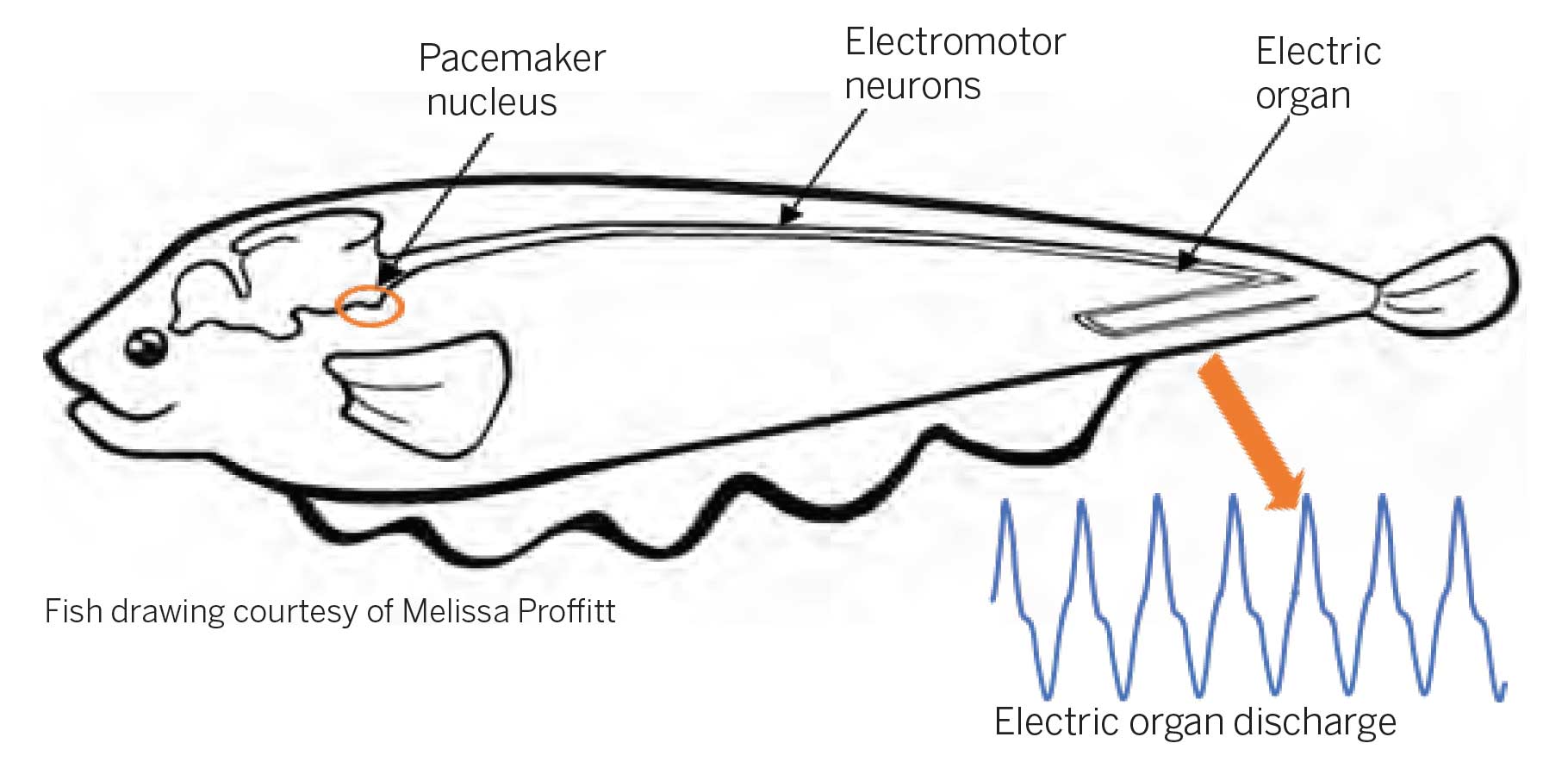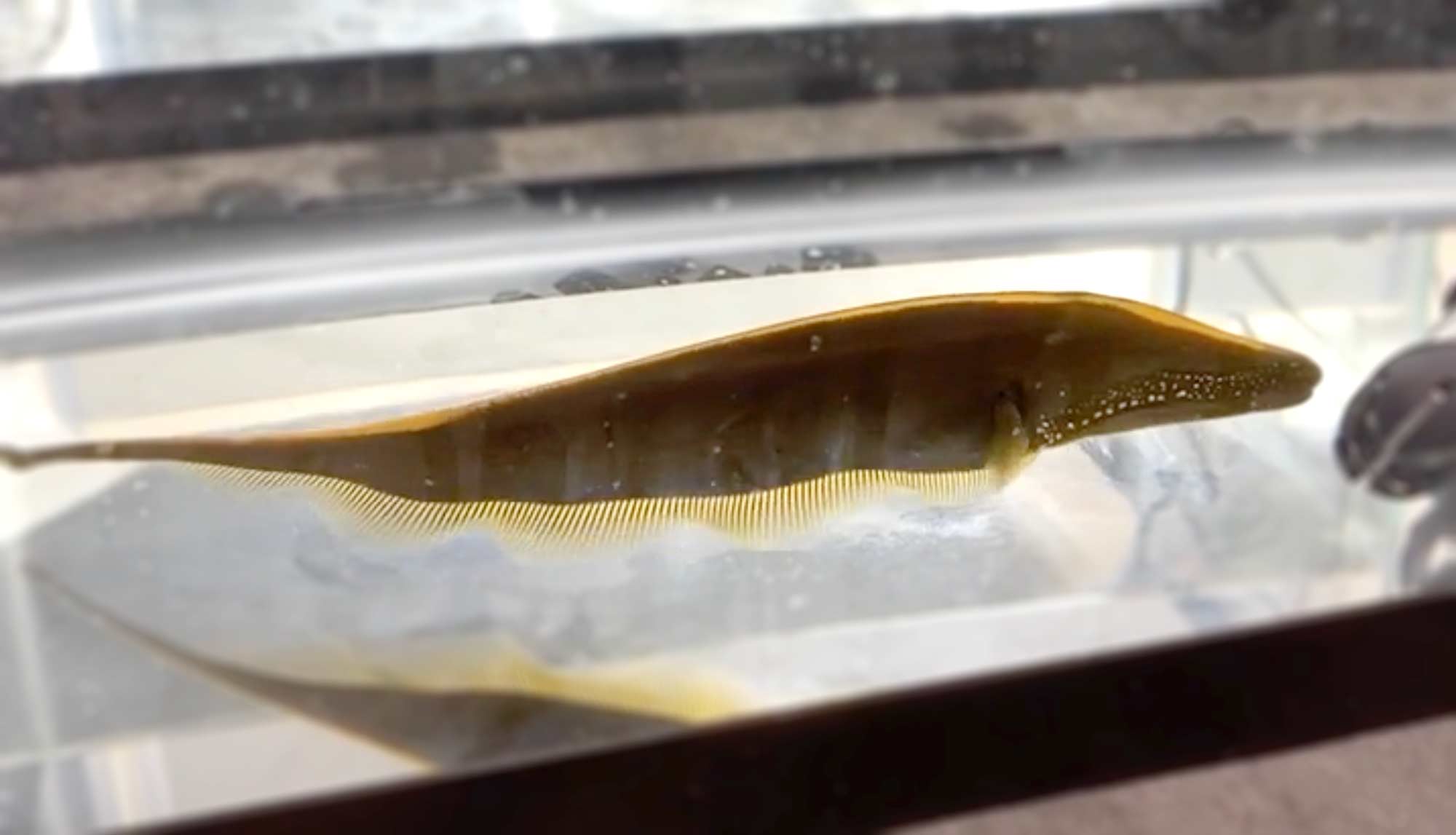Motor Neurons in Electric Fish
We typically think that the job of motor neurons is to transmit information from our brain to our body to help us move around and interact with the world. Interestingly, some species of animals also have specialized motor neurons that can help them interact with the world in a very unique way.
This is true of electric fishes, which are a group of fishes that are native to South America and includes the electric eel. However, unlike the electric eel, which produces a strong electrical current for hunting prey, most species of electric fish only produce weak electric signals. These weakly electric signals are instead used for communication and electrolocation. So, these fishes are actually using electrical signals to sense their surroundings, similar to how we use our eyes to see the world. These signals, known as electric organ discharges (EODs), are produced from an electric organ that is located in the fish’s tail. EODs look very similar to sine waves and are produced at a particular rate or frequency.

When there are objects in the fish’s environment, the electric field they produce gets distorted and provides the fish with information about the identity of the object. Electric fish have a region in their brain, known as the pacemaker nucleus, that controls the rate of the EOD. Similar to how your brain might tell your arm to move, the pacemaker nucleus sends a message to the electric organ about how fast the EOD should be.
This electrical message is transmitted along the spinal cord using electromotor neurons, which are a specialized type of motor neuron in electric fish. These unique motor neurons carry the message about how fast the EOD is from the pacemaker nucleus down the spinal cord in the form of an action potential. This signal then tells the electric organ what frequency the discharge should be.


